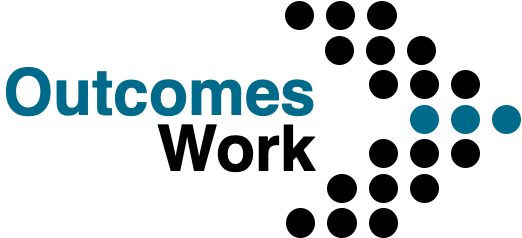Business Outcomes Playbook:
Buying Organizations
Create a Business Outcomes centered organization to maximize the purpose and payoff of initiative investments.

Business Outcomes Playbook for Buying Organizations
Purpose of this Business Outcomes Playbook™
The purpose of this Business Outcomes Playbook™ is to equip leaders like you and organizations like yours to maximize the Purpose and Payoff of initiative investments.
The Playbook will help you:
-
-
Build confidence that your initiatives will deliver the desired return on investment.
-
Ensure that each initiative is mapped and responsive to your organization’s vision, strategy and goals.
-
Engage and inspire your great people and teams so that their energy and behavior throughout each initiative reflects high and personal motivation and commitment.
-
Minimize the risk and impact of failure, and
-
Create a Business Outcomes centered organization that maximizes the purpose and payoff of every initiative.
-
An Executive Preview
The Business Outcomes Playbook™ is based on three unified components:
-
-
Business Outcomes that define measurable business results from your investments of time, money and other resources.
-
A Business Outcomes Framework™ that provides a comprehensive and reusable reference for catalyzing and organizing your business outcomes planning, ensuring that nothing gets missed.
-
And Business Outcomes Maps that tie your people, investments and initiatives to your vision, strategy and goals.
-
Together, these form a durable and dynamic platform for elevating conversations, planning, and decision-making to define and accelerate business value for your organization.
It all starts with Business Outcomes…
Introduction to Business Outcomes
A Business Outcome is the measurable business result from some investment of time, money and other resources.
Generating more revenue, reducing expenses, gaining more customers, and opening new markets are all familiar examples of business results that would be expected of an investment.
This familiarity allows us to justify investments, e.g. “If we build this building, we can sell more widgets” and “If we buy this software system, we can produce those widgets faster.”
And the generality and acceptance of broadly stated justifications is what enables buying organizations to say, “We all know why we need a new [building, software system, etc.], so let’s analyze our processes and document our requirements so that we can compare the options available in the market.”
The focus quickly becomes the nitty-gritty details of “what” and “how” the competing solutions fulfill the requirements at, of course, the lowest responsible cost.
Lost in the shuffle is the “personally motivating why”, where measurable business results that stakeholders can relate to and are driven by are defined at:
-
-
Levels of specificity that directly impact leaders and their teams
-
Magnitudes of scope and impact that boards and cabinets care about, and
-
Against which the solution providers can be intimately compared.
-
Enterprise Software Systems as Our Example
While Business Outcomes are central to any business investment or initiative, we will use enterprise software system planning, selection, implementation and on-going optimization as the primary example throughout the Business Outcomes Playbook.
The Distinct Role of Business Outcomes
Where requirements focus on “what”, Business Outcomes focus on “so what?“.
Requirements form an essential core of enterprise software planning, selection, implementation and optimization initiatives.
Requirements take many forms, including detailed specifications, specific or general questions, and even operational scenarios, that seek to convey the functional abilities and technical attributes the buying organization is looking for, and to ascertain what the available solutions can or cannot do in response.
Examples:
-
-
System must do XYZ function.
-
Ability to do EFG.
-
How does the system automate this task?
-
How would the system support this process?
-
Business Outcomes play a distinctly different and catalyzing role.
Requirements help your people understand how a new system might help them do their work. Business Outcomes enables them to define how they will leverage a new system to move our organization forward.
Read each example below, leading with the phrase “We intend to…”:
-
-
Increase retention of employees with 3-7 years by 10% by the end of next year.
-
Reduce the number of staff hours needed to support the hiring process by 35% within 18 months.
-
Increase our NPS for new-hire onboarding of persons with disabilities to 95% within 12 months.
-
Stating intentions this way creates excitement and a personal connection to the future state that requirements never have.
It also clearly conveys to the solution providers the specific business results your organization needs to achieve once the new system is operational. In other words, it defines the expected business value of the investment.
This gives the solution providers the opportunity to show how their solution has helped other organizations like yours to achieve similar business results, or how they would approach achieving such results.
With so many of your deeply knowledgeable former colleagues and peers serving as the representatives of the solution providers, focusing on Business Outcomes elevates the conversation and unlocks excitement and know-how in a way that demonstrating capabilities in response to requirements never will.
Creating Business Outcomes
The creation of business outcomes requires four things:
-
-
Useful Context
-
Knowledgeable People
-
Productive Collaboration
-
Trusted Decision-Making
-
Let’s continue to use enterprise software system planning, selection, and implementation as our working example.
Useful Context
Business Outcomes must be connected to a context to have meaning.
If your organization has a clear vision and a well-developed strategic plan, then context starts there.
The question becomes “What are the business outcomes this enterprise software system initiative must deliver to fulfill the vision, support the strategy, and achieve the goals of our plan?”
In the absence of an available overarching plan or vision, context can be created for an enterprise software system initiative by determining which major aspects of the enterprise could be positively impacted by a thoughtful deployment of the new system.
Revenue, efficiency, new opportunity, productivity, satisfaction, risk reduction and more are all good places to start. (We did this very same thing in our “Business Outcomes Framework“.)
Knowledgeable People
Determining relevant, impactful and achievable business outcomes requires people who know and understand the target markets, mission and vision, and operations of the organization – and who are excited about its future.
People who can see and think both deep and wide are ideal members for your Business Outcomes team.
Productive Collaboration
Your Business Outcomes team will need to collaborate effectively to ensure the full value of each individual’s perspective, know-how, ideas, questions, and willingness and capacity to contribute.
Group and individual focus, discipline, respect, timeliness, communication skills, energy, a sense of urgency and more are important elements of productive collaboration.
Trusted Decision-Making
Your Business Outcomes team will ultimately need to make decisions. Outcomes scope, criteria, priorities, and final recommendations are just a few of the primary decision areas.
How decisions are made becomes critical very quickly, so establishing an appropriate decision-making model and process is key.
People inside and outside of the team need to be able to trust the recommendations and the work that led to them – and understand how the Business Outcomes relate to them and your organization.
Why a Business Outcomes Framework™?
Enterprises and initiatives are complex and dynamic things – and the human mind needs a framework to make sure we cover all the important results we need to achieve our vision, goals and strategy.
Like the business model canvas is a guide for a team to make sure they have thought through the different pieces they will need for their strategy …. the Business Outcomes Framework™ helps your team think through the different results they need to achieve their vision, goals and strategy.
The Business Outcomes Framework™
We created our Business Outcomes Framework™ to provide a practical set of tools to help teams map their organizational strategies, initiatives and solutions to the business outcomes they need to achieve success.
It’s easy to image dozens and maybe hundreds of individual business outcomes that a new enterprise software system, for example, could (and should) support. With so many and varied business outcomes to consider, the Business Outcomes Framework™ serves as a starting point for imagining, crafting, organizing and prioritizing business outcomes for any initiative investment.
Then, as the initiatives move along, the Framework provides a reference for measuring results and determining optimization efforts throughout their lifecycle.
The Back Story
When we began Outcomes Work, one of the key ideas was to connect each client’s creation of Business Outcomes to their strategic plan. In the very first handful of projects, and in examining scores of strategic plans across various markets, we quickly determined that strategic plans varied so greatly in availability and usability that a new and much more uniform approach was necessary.
At the core of this new approach emerged the idea of a standardized, reusable framework that – independent of but relatable to any strategic plan – would provide immediate value and traction for the buying organizations and solution providers that we were committed to serve.
Elements of a Business Outcomes Framework
The Outcomes Work Business Outcomes Framework™ has five primary elements. The first three provide structural hierarchy for outcomes while the last two pertain to the outcomes themselves:
-
-
Business Value Categories represent the key areas that your organization manages to grow and be successful. In our Framework, we have six Value Categories, including Satisfied Customers, Optimal Capacity, Revenue Growth.
-
Business Drivers are the internal levers that directly impact or influence your organization’s strategy, operations, and ultimately performance. Each Value Category would contain one or more Business Drivers that are key to success within the category. In our Optimal Capacity Value Category, we’ve included Optimal Structure and Talent Attracted and Retained.
-
Investment Areas refer to a specific focus points or domains within which your organization chooses to allocate its resources, such as capital, time, and talent, to achieve its vision, strategy and goals. They represent specific operational initiatives, programs or projects that align with your broader Business Drivers and are designed to deliver your desired Business Outcomes. For our Talent Attracted and Retained Business Driver, the Investment Areas include Employee Well-Being Success and Valued Employee Experience.
-
Business Outcomes are the measurable business results from your investments of time, money and other resources.
-
Value Vectors form the basis for the metrics of business value scope and impact of each Business Outcome. In our Framework we have included Value Vectors such as Revenue, Expense, Culture, and Agility.
-
What is Business Outcomes Mapping?
Business Outcomes Maps tie your people, investments and initiatives to your vision, strategy and goals so that everyone understands the “why”.
Strategic Business Outcomes Mapping
Mapping organizational vision, strategies and goals to Business Drivers and Investment Areas helps your extended team prioritize critical areas of focus, enhance informed decision-making, and facilitate progress tracking.
Solution (Family) Business Outcomes Mapping
When planning new initiatives (or reviewing existing ones), mapping Business Drivers and Investment Areas is key to ensuring the initiative is aligned with the organization’s overarching vision, strategy and goals.
The Initiative Business Outcomes Map provides a clear connection between the initiative’s objectives and the key factors that drive organizational success, ensuring that the initiative contributes effectively to the broader strategic vision.
Solutions Business Outcomes Mapping
When organizations include required Business Outcomes along with context in their Request for Proposal (RFP), it ensures clarity and alignment around what success must look like for both the Buying Organization and Solution Providers, facilitating a more complete evaluation of proposed solutions.
Implementation Business Outcomes Mapping
Aligning the extended team of a buying organization, solution providers, and consultants on Business Drivers, Investment Areas and Business Outcomes is essential to a unified vision of success.
An Implementation Business Outcomes Map fosters a common understanding that sharpens decision-making, focusing implementation choices on achieving the desired Business Outcomes.
Change and Optimization Mapping
When Business Drivers, Investment Areas and Business Outcomes are updated, aligning the extended team of the buying organization, solution providers, and consultants is essential for ensuring an aligned vision and an updated view towards what success must now look like.
The speed to change is fastest when stakeholders understand the reasons for the change (the why) and how it impacts the Business Outcomes Map for the initiative.
Find Your True North in Business Outcomes
Now, as a Business Outcomes centered organization, everyone is more confident and excited about how to reach True North.
These are some of the ways the organization is now operating to achieve this new level of confidence:
-
-
Divisional and departmental Business Outcomes plans are connected to the overall organization strategic plan.
-
Initiatives are funded based on the Business Outcomes they support.
-
Solution Providers and their proposed solutions are evaluated and selected based on their track record of supporting similar Business Outcomes for other Buying Organizations.
-
Legacy systems are reinvigorated by freshly aligning and optimizing them to support the current Strategic and Initiative Business Outcomes Maps.
-
Change management processes ensure there is a regular review of the organization’s Business Outcomes Maps to enable agility and speed to value in new contexts.
-
Risk management processes include regular reviews of expected Business Outcomes both strategically and at an initiative level.
-
Benefits realization approach is tightly aligned to the Business Outcomes the organization must achieve.
-






